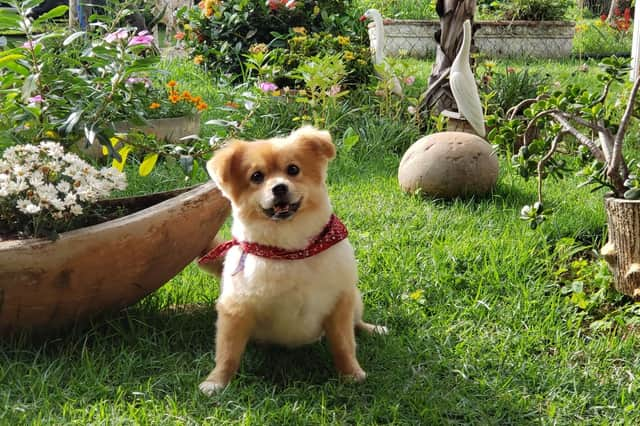Dog Friendly Gardens 2023: Here are 5 natural and kind alternatives to toxic garden pest deterrents 🐶


Common pests are a problem for most keen gardeners, but what about if you are a dog lover too? Unfortunately, most pesticides and deterrents are toxic to your pet.
With this in mind, Johanna Buitelaar-Warden, founder of online retailers Lords and Labradors, has shared five key tips for gardeners on how they can still prevent those pesky pests but with their pet in mind.
Advertisement
Hide AdAdvertisement
Hide AdAnd she also has some warnings about common garden plants, saying: "Before we talk about pest control, it is important to be aware of the plants or flowers that are particularly hazardous to dogs. Lilies, daffodils, peonies, tomato plants and hydrangeas are all toxic to your dog. Before buying or planting anything in your garden, you should check the toxicity to your pet to avoid any unwanted trips to the vet. If your dog ingests any of these, look for common symptoms of poisoning such as vomiting, lethargy, breathing changes and diarrhea. Pesticides can be extremely toxic to your dog, but there are many natural and pet-friendly ways to deal with garden pests."
Here's what she suggests.
Eggshells
Scatter crushed eggshells around your plants. This will deter any slugs from eating your plants and flowers. Eggshells are not considered nutritious to your dog; however, they are completely harmless if ingested. As they are usually a kitchen staple, this is also a particularly cost-effective way to keep your garden in check.
Introduce wildlife
Although some dogs tend to chase or bark at birds, they may be a brilliant way to deter pests from your garden. Introducing a bird table will mean that some of those plant-eating insects will be eaten by the birds before they can do any damage. Hedgehogs are also brilliant for eating slugs, beetles and caterpillars. Having long grass or heavy undergrowth under any bushes will encourage hedgehogs to make your garden their home. However, this is only suitable for dog owners who know their pet won’t take much interest in hedgehogs. Biting or touching a hedgehog could mean another trip to the vets.
Hollowed out grapefruit
Placing hollowed out grapefruit around your planters will attract any bugs that are making a beeline for your plants. Trapping them in there is a great way to naturally dispose of plant-eating beetles. Grapefruit flesh is not toxic to your dog, so if they happen to lick or eat any leftover flesh, they will be just fine.
Avoid using grass seeds
Grass seeds are extremely toxic to dogs if ingested. Some dogs even need an operation to remove grass seeds from their stomach. You can opt for some great natural alternatives when trying to grow your lawn. Surprisingly, dog urine is a concentrated fertiliser for grass. However, this is only true if diluted. As soon as you spot your pooch going to the toilet, use a hose to water it down.
Encourage some insects
Not all insects are looking to damage your plants and garden. Some, like hoverflies, are predators to some of those pests. They are also brilliant for pollinating your flowers, encouraging your garden to flourish. You can introduce hoverflies into your garden by planting daisies, as these are particularly attractive to them.
Comments
Want to join the conversation? Please or to comment on this article.